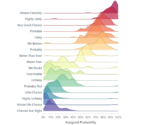In an era where data-driven decisions can make or break critical business outcomes, understanding how to effectively visualize weather prediction data is no longer optional—it’s essential. The complexity of meteorological models demands sophisticated analytics solutions tailored for clarity and actionable insight. If you’re a decision-maker in aviation, agriculture, logistics or emergency management, you recognize that accurate weather prediction visualization can radically improve risk assessment and resource optimization. Through advanced meteorological model dashboards, stakeholders can transition from reactive response strategies to proactive strategic decisions. As seasoned experts in data analytics and cutting-edge technologies, we understand the complexities underlying complex data architectures and visual interfaces. In this blog, we’ll explore how meteorological model dashboards establish a powerful foundation for informed, strategic decision-making—positioning your organization one clear step ahead of weather uncertainties.
The Strategic Importance of Weather Model Visualization
The transformative potential of weather model visualizations is significant across numerous industries. Accurate and easy-to-comprehend weather dashboards translate highly complex and voluminous meteorological data into actionable insights and strategic decisions. Aviation giants optimize routes, agricultural producers anticipate critical planting and harvesting schedules, logistics providers minimize disruptions, and emergency management can refine preparation and responsiveness. Visualization dashboards serve as critical communication tools, emphasizing clarity, timely storytelling, and informed forecasts. A well-structured visualization strategy allows stakeholders to grasp intricate predictive patterns intuitively, drastically shortening decision-making timelines and improving outcomes.
Furthermore, meteorological visualization dashboards contribute significantly toward turning business chaos into order using data architecture. They seamlessly integrate vast data volumes from diverse meteorological sources, ensuring flexibility, scalability, and adaptability in the face of changing industry demands. With the right visualization platforms, decision-makers confidently navigate scenarios, transforming data complexity into clarity. Ultimately, visualizations reinforce strategic foresight, reduce risks, and drive operational efficiencies—allowing teams across every industry to consistently deliver exceptional business value through predictive clarity.
Designing Dashboards that Cut Through Complexity
Dashboards for meteorological predictions present unique visualization challenges. The complexities of weather data—multiple variables, spatiotemporal variations, uncertainty management—require effective design strategies to ensure dashboards provide clarity. The key lies in advancing simple visualizations through practices like progressive disclosure in complex visualization interfaces, empowering users to dive deeper into data as required without becoming overwhelmed.
Strategically designed dashboards avoid information overload by layering data visualizations logically: beginning with high-level predictions, then allowing user interaction and exploration of lower-level details as needed. This approach ensures decision-makers are presented only with necessary details relevant to their immediate needs, maintaining usability without sacrificing depth.
Additionally, addressing uncertainty within meteorological predictions is crucial. Intelligent dashboards balance predictive confidence with communicating inherent uncertainties honestly. By integrating color scales, uncertainty bands, or transparency levels, strategic designs enable quick cognitive comprehension of probability and potential variances within forecasts. This foundation of clarity helps businesses make informed strategic choices, turning data complexity into actionable business intelligence.
The Role of Advanced Data Engineering to Enhance Meteorological Dashboards
Effective visualization within weather dashboards hinges on the quality, speed, and reliability of data pipelines feeding into them. Achieving this requires robust data engineering practices and capabilities. Our experience shows that giving due consideration to data engineering best practices tailored for small teams can vastly enhance the value your business derives from weather dashboards. By ensuring high standards in data processing, aggregation, and filtering, dashboards provide timely insights efficiently.
High-quality dashboards also depend heavily upon accurate data aggregation strategies. Leveraging robust SQL functions is essential when summarizing underlying meteorological datasets. For instance, understanding concepts from harnessing aggregate functions in SQL such as MIN, MAX, AVG, and SUM is fundamental in summarizing temperature fluctuations, wind-speed variations, and cumulative rainfall data for intuitive visualization.
Finally, utilizing advanced cloud data platforms such as Amazon Redshift offers powerful tools for scalable and efficient analytics. Consider engaging Amazon Redshift consulting services to harness the full potential of cloud-based data warehousing—delivering optimized and high-performance predictive analytics. Thus, investing in superior data engineering strengthens the reliability, responsiveness, and viability of meteorological dashboards, ensuring real-world relevance and speed in insights and strategic execution.
Integrating Quality Controls within Weather Prediction Dashboards
The integration of quality controls and systematic checks into meteorological data visualization is paramount to ensuring the dashboards provide trusted insights. Effective weather prediction dashboards implement rigorous automated workflow-integrated data quality validation gates, ensuring organizations reduce risks and operational uncertainty originating from data issues. Implementing these quality validation gates offers confidence that dashboards represent accurate and timely prediction data, minimizing the risk of costly, flawed strategic decisions.
Long-running transactions are common within complex meteorological data processes. Effective long-running transaction management in ETL workflows ensures high-quality data availability by mitigating downtime or incomplete transactions. By embedding these best practices into dashboard back-ends, organizations ensure reliability, consistency, and speed—critical in high-stakes environments requiring consistently accurate weather data visualizations.
Additionally, adopting robust transactional data lake frameworks such as Delta Lake, Iceberg, or Hudi provides significant advantages in managing scalable meteorological data stores. Understanding the nuances among these frameworks—outlined effectively in our detailed transactional data lake comparison—ensures organizations optimize performance and data reliability, essential for seamless data-driven decisions.
Optimizing Weather Data Processing for Real-Time Decision Making
The real-time dimension within meteorological dashboards is of particular strategic importance. Decision-makers in sectors such as aviation, logistics, agriculture, and emergency response consistently navigate scenarios where rapid decision-making based on real-time weather patterns is crucial. Ensuring efficient data processing pipelines is integral in delivering timely visualization dashboards that deliver actionable insights.
Optimizing large-scale weather data involves sophisticated techniques to accelerate analytics processes, such as optimizing shuffle operations in distributed data processing frameworks. These optimization strategies accelerate key data transformation operations—essential when dealing with large-scale real-time meteorological data feeds—reducing delays and increasing the utility and applicability of dashboards.
Furthermore, organizations can enhance decision-making capability through user-driven data classification implementations, empowering domain experts to proactively classify and enrich weather source data according to specific business-critical criteria. This results in richer contextualized dashboards, helping data-driven leadership immediately understand emerging patterns and their associated business impacts. These strategic platform optimizations establish the agility and responsiveness necessary in maximizing dashboard utility within dynamically changing meteorological scenarios.
Conclusion: Strengthening Strategic Decisions through Advanced Meteorological Dashboards
Weather prediction visualization dashboards represent more than simple presentations of complex meteorological data—they symbolize strategic business tools that integrate intelligent analytics, real-time responsive design, robust data engineering, and quality validations. Leaders who leverage robust data architecture, intelligent visualization philosophies, and advanced engineering capabilities position themselves strategically ahead of their competitors.
With a comprehensive understanding of predictive data visualizations—ranging from strategic visual disclosure, authoritative quality assurance, robust scalability, and real-time responsiveness—your team will harness predictive momentum while mitigating critical risks. Partnering with experienced practitioners who understand these nuances, such as accessing strategic consulting services in analytics and visualization strategy, ensures that your meteorological dashboards accurately inform and direct crucial decisions, underpinning dependable organizational resilience within volatile weather conditions.
Ultimately, weather prediction dashboards are impactful investments, delivering substantial ROI derived primarily from enhanced decision confidence, foresight, and responsiveness arising from superior predictive clarity.
Thank you for your support, follow DEV3LOPCOM, LLC on LinkedIn and YouTube.



















